
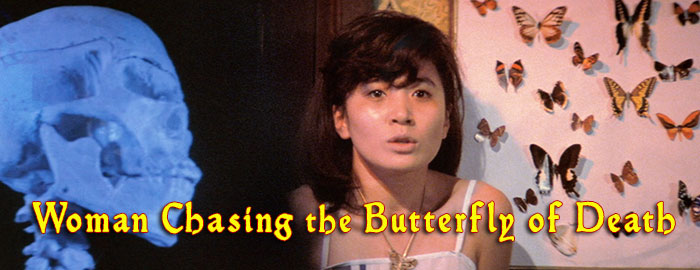
Color, 1978, 116 mins. 41 secs.
Directed by Kim Ki-young
Starring Kim Jeong-cheol, Kim Ja-ok, Kim Man
Mondo Macabro (Blu-ray) (US R0 HD) / WS (2.35:1) (16:9)
Best 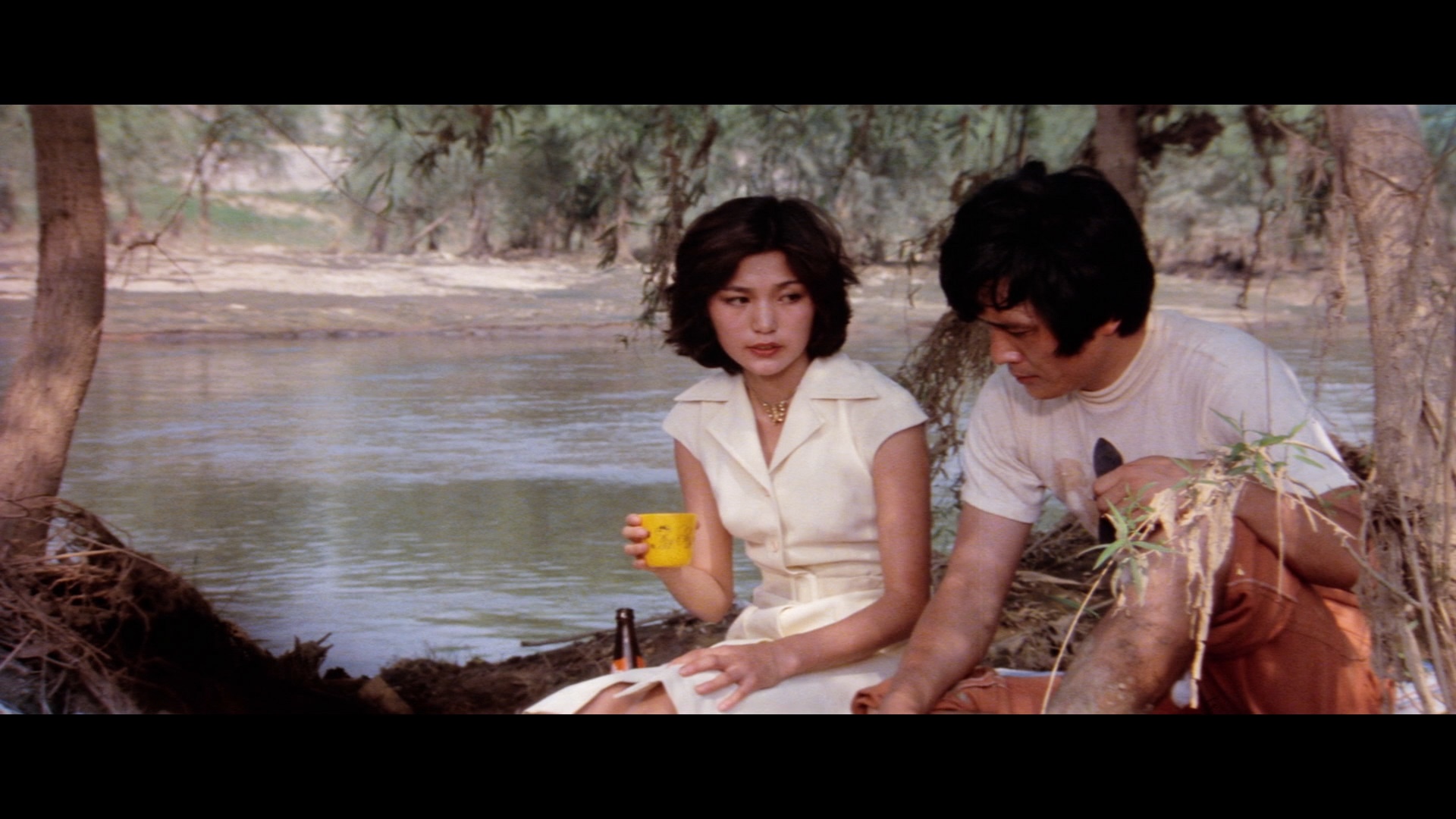 known to international audiences
known to international audiences  for his outrageous and utterly wonderful 1960 thriller The Housemaid, Korean director Kim Ki-young built up an astonishing career in his native country with a number of unpredictable, eccentric films including Insect Woman, Transgression, and Woman of Fire. One of his very wildest films, 1978's Woman Chasing the Butterfly of Death, is far out even by his standards, a free form, surrealistic and sometimes crazily funny episodic meditation on death and fate. You've definitely never seen anything else quite like it.
for his outrageous and utterly wonderful 1960 thriller The Housemaid, Korean director Kim Ki-young built up an astonishing career in his native country with a number of unpredictable, eccentric films including Insect Woman, Transgression, and Woman of Fire. One of his very wildest films, 1978's Woman Chasing the Butterfly of Death, is far out even by his standards, a free form, surrealistic and sometimes crazily funny episodic meditation on death and fate. You've definitely never seen anything else quite like it.
One afternoon while out on a college picnic trip with his gigantic butterfly net, harmonica enthusiast and college student Young-gul (Jeong-cheol) spies the opportunity to poison a particularly attractive specimen. The killing catches the eye of a young, melancholy woman under a tree who starts saying things like "When it comes to death, people are no different" and offers him a glass of bottled orange juice. She immediately informs him the juice was poisoned because "I didn't want to die alone... We'll go to heaven together." Fortunately he runs off for help and manages to survive unlike the girl, who was planning a double suicide until her companion never showed up. The night after, he's approached by a strange, bearded salesman and, unable to get past the poisoning experience, decides to hang himself from the rafters. However, the cackling salesman stops him and offers a book showing how strong willpower can overcome death itself – something he proves by goading Young-gul into stabbing him with a butcher knife. After his dying words ("I feel set free"), the seller keeps coming back in less corporeal form, eventually as a cackling, philosophy-dispensing skeleton. Apparently failing to learn his 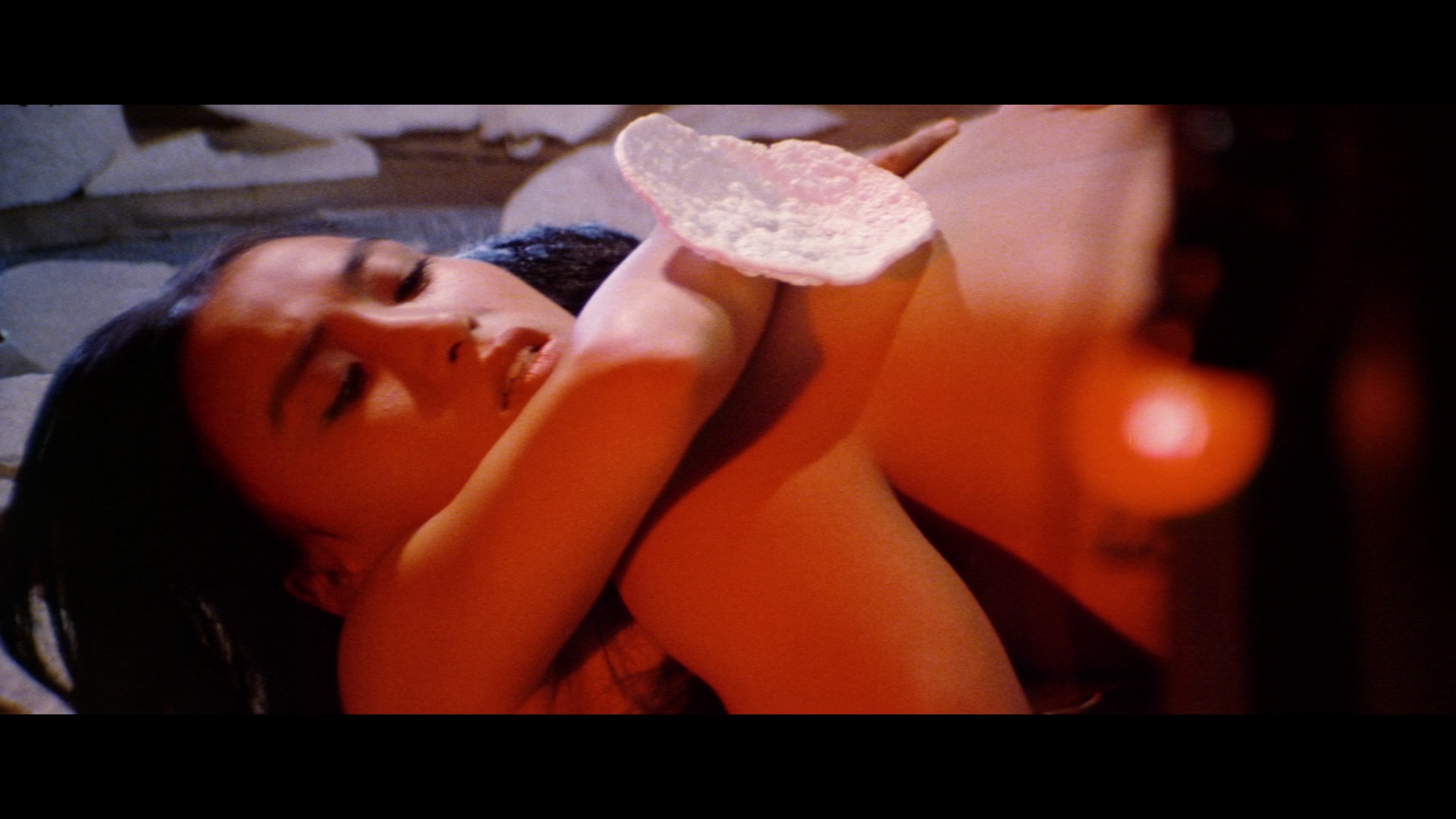 lesson about
lesson about  going outdoors, he then embarks on a day of spelunking where he finds a skeleton that's so significant it could get him a job with a prominent local archaeologist. Upon restoring the skeleton, it turns out to be a beautiful cursed woman who treats him to a night of passion (while getting pelted by an automatic bread machine) and near cannibalism. From there the delirious stew just gets crazier with the involvement of a butterfly necklace, the first dead girl's intended suicide partner, a hard-nosed bald cop who says things like "What? Professor Kim's missing a head?," a masked grave robber who hacks up bodies with a cleaver, romantic butterfly hunting, a beach dance party, and an utterly uncontrolled climax that plays like a whodunit twist on Re-Animator.
going outdoors, he then embarks on a day of spelunking where he finds a skeleton that's so significant it could get him a job with a prominent local archaeologist. Upon restoring the skeleton, it turns out to be a beautiful cursed woman who treats him to a night of passion (while getting pelted by an automatic bread machine) and near cannibalism. From there the delirious stew just gets crazier with the involvement of a butterfly necklace, the first dead girl's intended suicide partner, a hard-nosed bald cop who says things like "What? Professor Kim's missing a head?," a masked grave robber who hacks up bodies with a cleaver, romantic butterfly hunting, a beach dance party, and an utterly uncontrolled climax that plays like a whodunit twist on Re-Animator.
A very far cry from the mainstream dramas that dominated Korean cinema at the time (during a particularly fallow period), this is the kind of film that would have easily played at midnights overseas had it stood a chance at any kind of real distribution. Anyone who went wild for the likes of Hausu should find plenty to enjoy here as the film takes numerous bizarre narrative detours with a visual surprise or two in every scene. At just under two hours it's definitely too long for its own good and could have easily lost at least 15 minutes without harming anything, but that's a very minor issue given how much the film gives you for your time investment. It's great eye candy as well with some blazing use of primary colors kicking in after the first act, and if you're looking for something to pop on for group Halloween viewing that absolutely no one has ever seen  before, this should definitely do the trick.
before, this should definitely do the trick. 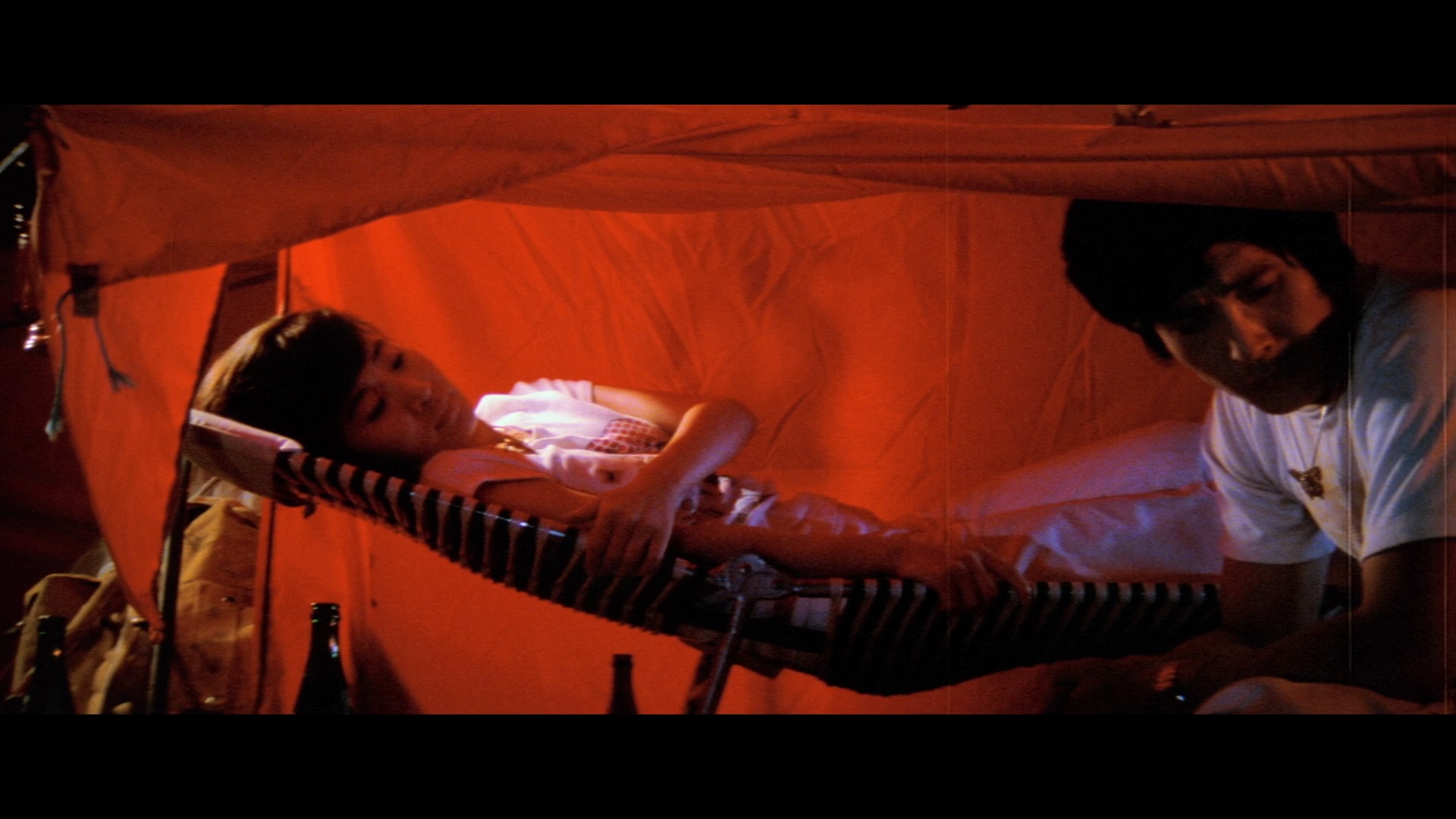
Unavailable in an official English-friendly version of any kind until it popped up for a little while in SD on the Korean Film Archive YouTube channel, this film made its worldwide Blu-ray debut (or perhaps any home video format at all) from Mondo Macabro in 2019 in a stacked edition that answers pretty much any questions you could have about the director. Restoring Korean films has been a famously difficult proposition for a long time (as anyone who's seen Criterion's edition of The Housemaid can attest), but this looks very impressive for a late '70s title with those gaudy colors looking bold and frequently astonishing here. Some scenes have a softer look (especially the daytime outdoor ones) which appears to be an intentional aesthetic choice given the increased clarity once it goes indoors; the film was also apparently shot with older anamorphic lenses that give the actors a case of the infamous CinemaScope mumps in some close ups and medium shots, so that isn't a defect. Some scratches pop up here and there, but it's minor and fleeting. The DTS-HD MA Korean mono track is in pretty good shape with no significant issues, and optional English subtitles are provided. A new audio commentary by Kenneth Brorsson and Paul Quinn of the What's Korean Cinema podcast is lighthearted and interesting as they try to parse out the meaning of the film and identify some of the actors (which is quite difficult to do apparently), with plenty of details about the way Korean moviegoers would have received this film and what led the 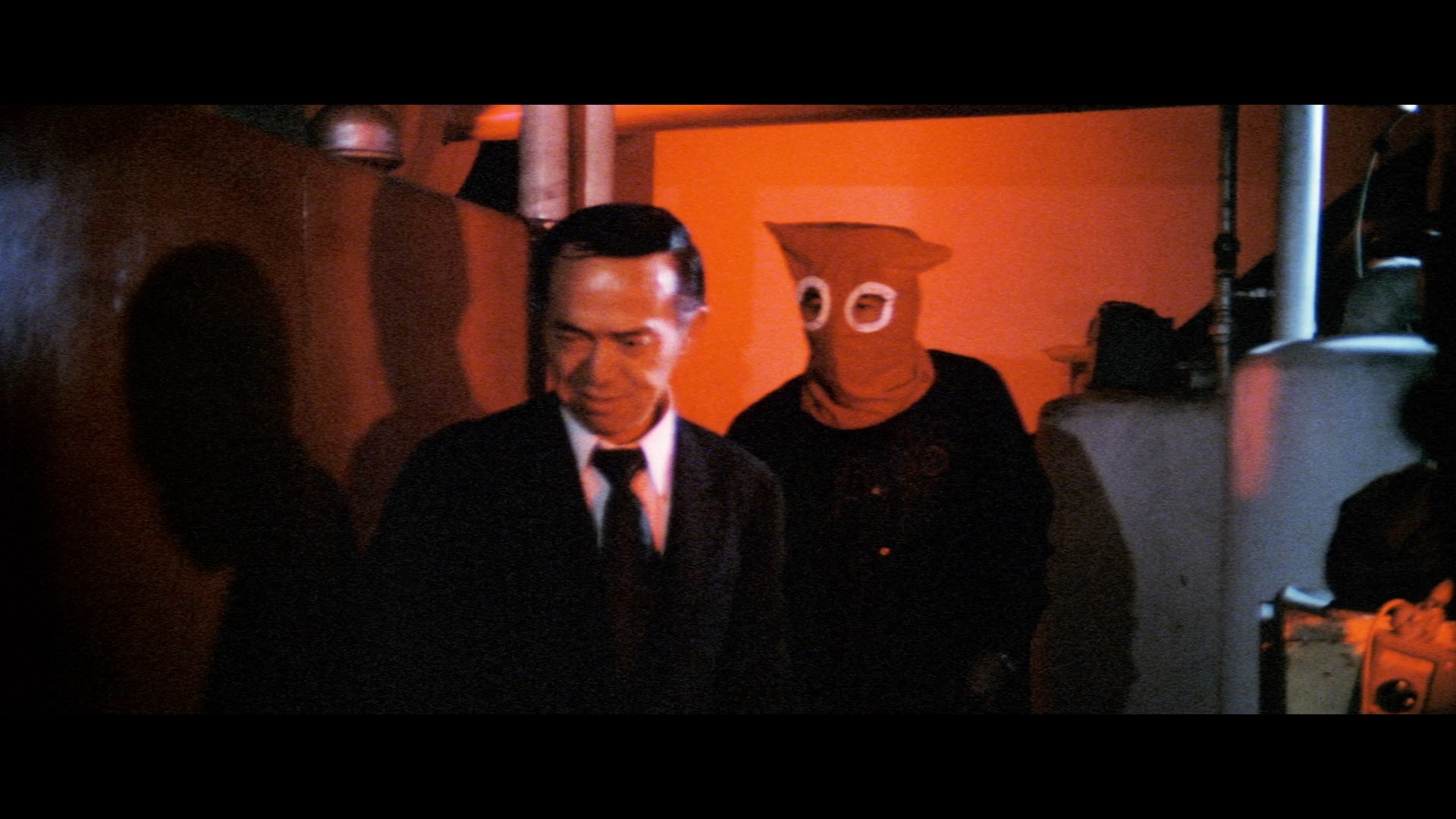 director to tackle this in the first place. They do manage to keep it all chugging along for the full two hours, too, so hats off for that! The
director to tackle this in the first place. They do manage to keep it all chugging along for the full two hours, too, so hats off for that! The 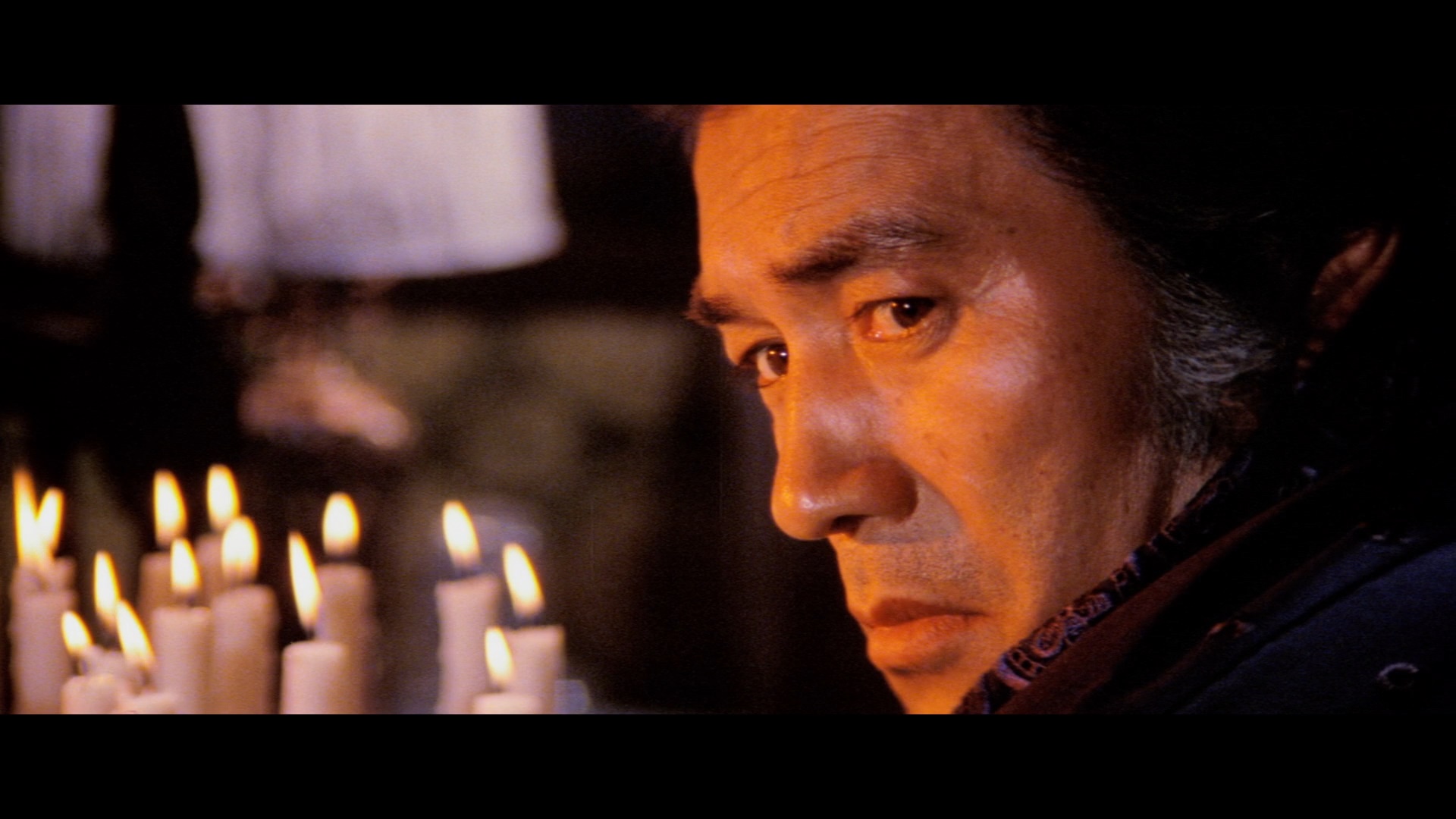 featurette "Eleven Questions for Darcy Paquet" (14m59s) is an interesting Q&A with the American critic who crusaded hard to bring Korean cinema to the attention of English-speaking viewers, including considerable info about Kim Ki-young, his standing in his country, and the struggles he had to go through to create his films. An interesting interview with actress Lee Hwa-si (11m22s) covers her long period of collaboration with the director over the course of seven films after she answered an ad looking for actors and ended up in acting school while she was in college. Then producer Jung Jin-woo appears for an interview split up into two parts (16m6s and 12m59s), who goes into his very prolific career in Korean cinema, his three films with Kim Ki-young, the influence of people like Orson Welles, his approach to cinematic symbolism, the Korean youth audience, the cultural treatment of women, the reasons for making Woman of Fire (essentially a remake of The Housemaid), and a tiny bit about this film. Finally, cinematographer Koo Joong-mo appears for an interview (6m26s) about Kim Ki-young including the avoidance of storyboards, the unique nature of their work together, the mostly solid box office reception, and the director's sad death in a fire. The disc closes out with the obligatory Mondo Macabro promo reel, and as with the label's other releases, is an essential purchase for any fan of outrageous international cinema.
featurette "Eleven Questions for Darcy Paquet" (14m59s) is an interesting Q&A with the American critic who crusaded hard to bring Korean cinema to the attention of English-speaking viewers, including considerable info about Kim Ki-young, his standing in his country, and the struggles he had to go through to create his films. An interesting interview with actress Lee Hwa-si (11m22s) covers her long period of collaboration with the director over the course of seven films after she answered an ad looking for actors and ended up in acting school while she was in college. Then producer Jung Jin-woo appears for an interview split up into two parts (16m6s and 12m59s), who goes into his very prolific career in Korean cinema, his three films with Kim Ki-young, the influence of people like Orson Welles, his approach to cinematic symbolism, the Korean youth audience, the cultural treatment of women, the reasons for making Woman of Fire (essentially a remake of The Housemaid), and a tiny bit about this film. Finally, cinematographer Koo Joong-mo appears for an interview (6m26s) about Kim Ki-young including the avoidance of storyboards, the unique nature of their work together, the mostly solid box office reception, and the director's sad death in a fire. The disc closes out with the obligatory Mondo Macabro promo reel, and as with the label's other releases, is an essential purchase for any fan of outrageous international cinema.
Reviewed on October 25, 2019
 known to international audiences
known to international audiences  for his outrageous and utterly wonderful 1960 thriller The Housemaid, Korean director Kim Ki-young built up an astonishing career in his native country with a number of unpredictable, eccentric films including Insect Woman, Transgression, and Woman of Fire. One of his very wildest films, 1978's Woman Chasing the Butterfly of Death, is far out even by his standards, a free form, surrealistic and sometimes crazily funny episodic meditation on death and fate. You've definitely never seen anything else quite like it.
for his outrageous and utterly wonderful 1960 thriller The Housemaid, Korean director Kim Ki-young built up an astonishing career in his native country with a number of unpredictable, eccentric films including Insect Woman, Transgression, and Woman of Fire. One of his very wildest films, 1978's Woman Chasing the Butterfly of Death, is far out even by his standards, a free form, surrealistic and sometimes crazily funny episodic meditation on death and fate. You've definitely never seen anything else quite like it.  lesson about
lesson about  going outdoors, he then embarks on a day of spelunking where he finds a skeleton that's so significant it could get him a job with a prominent local archaeologist. Upon restoring the skeleton, it turns out to be a beautiful cursed woman who treats him to a night of passion (while getting pelted by an automatic bread machine) and near cannibalism. From there the delirious stew just gets crazier with the involvement of a butterfly necklace, the first dead girl's intended suicide partner, a hard-nosed bald cop who says things like "What? Professor Kim's missing a head?," a masked grave robber who hacks up bodies with a cleaver, romantic butterfly hunting, a beach dance party, and an utterly uncontrolled climax that plays like a whodunit twist on Re-Animator.
going outdoors, he then embarks on a day of spelunking where he finds a skeleton that's so significant it could get him a job with a prominent local archaeologist. Upon restoring the skeleton, it turns out to be a beautiful cursed woman who treats him to a night of passion (while getting pelted by an automatic bread machine) and near cannibalism. From there the delirious stew just gets crazier with the involvement of a butterfly necklace, the first dead girl's intended suicide partner, a hard-nosed bald cop who says things like "What? Professor Kim's missing a head?," a masked grave robber who hacks up bodies with a cleaver, romantic butterfly hunting, a beach dance party, and an utterly uncontrolled climax that plays like a whodunit twist on Re-Animator. before, this should definitely do the trick.
before, this should definitely do the trick. 
 director to tackle this in the first place. They do manage to keep it all chugging along for the full two hours, too, so hats off for that! The
director to tackle this in the first place. They do manage to keep it all chugging along for the full two hours, too, so hats off for that! The  featurette "Eleven Questions for Darcy Paquet" (14m59s) is an interesting Q&A with the American critic who crusaded hard to bring Korean cinema to the attention of English-speaking viewers, including considerable info about Kim Ki-young, his standing in his country, and the struggles he had to go through to create his films. An interesting interview with actress Lee Hwa-si (11m22s) covers her long period of collaboration with the director over the course of seven films after she answered an ad looking for actors and ended up in acting school while she was in college. Then producer Jung Jin-woo appears for an interview split up into two parts (16m6s and 12m59s), who goes into his very prolific career in Korean cinema, his three films with Kim Ki-young, the influence of people like Orson Welles, his approach to cinematic symbolism, the Korean youth audience, the cultural treatment of women, the reasons for making Woman of Fire (essentially a remake of The Housemaid), and a tiny bit about this film. Finally, cinematographer Koo Joong-mo appears for an interview (6m26s) about Kim Ki-young including the avoidance of storyboards, the unique nature of their work together, the mostly solid box office reception, and the director's sad death in a fire. The disc closes out with the obligatory Mondo Macabro promo reel, and as with the label's other releases, is an essential purchase for any fan of outrageous international cinema.
featurette "Eleven Questions for Darcy Paquet" (14m59s) is an interesting Q&A with the American critic who crusaded hard to bring Korean cinema to the attention of English-speaking viewers, including considerable info about Kim Ki-young, his standing in his country, and the struggles he had to go through to create his films. An interesting interview with actress Lee Hwa-si (11m22s) covers her long period of collaboration with the director over the course of seven films after she answered an ad looking for actors and ended up in acting school while she was in college. Then producer Jung Jin-woo appears for an interview split up into two parts (16m6s and 12m59s), who goes into his very prolific career in Korean cinema, his three films with Kim Ki-young, the influence of people like Orson Welles, his approach to cinematic symbolism, the Korean youth audience, the cultural treatment of women, the reasons for making Woman of Fire (essentially a remake of The Housemaid), and a tiny bit about this film. Finally, cinematographer Koo Joong-mo appears for an interview (6m26s) about Kim Ki-young including the avoidance of storyboards, the unique nature of their work together, the mostly solid box office reception, and the director's sad death in a fire. The disc closes out with the obligatory Mondo Macabro promo reel, and as with the label's other releases, is an essential purchase for any fan of outrageous international cinema. ![]()